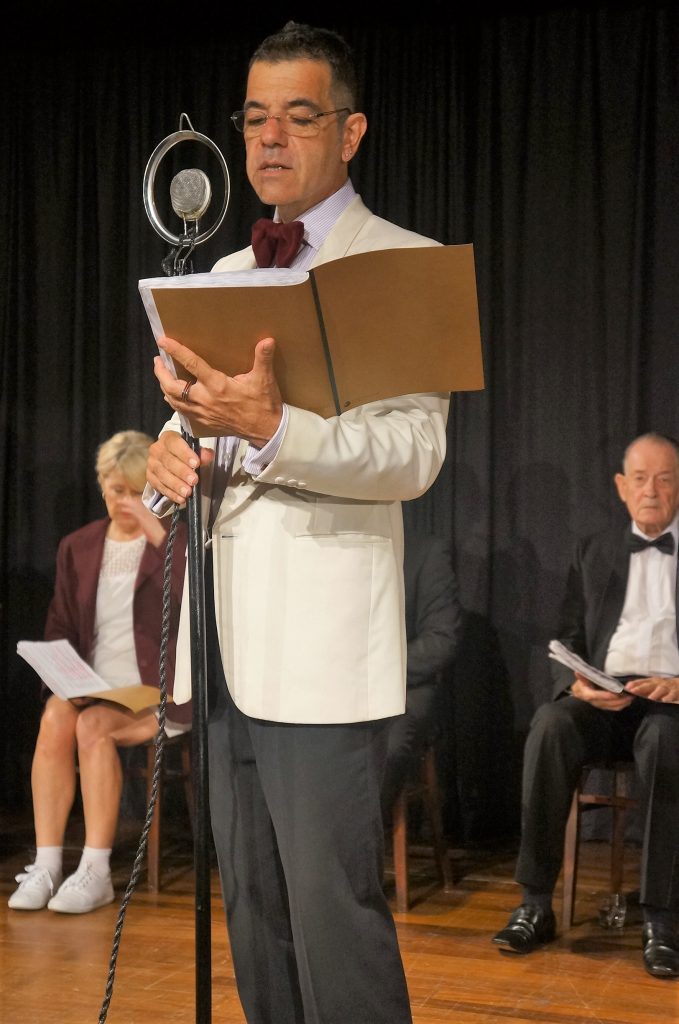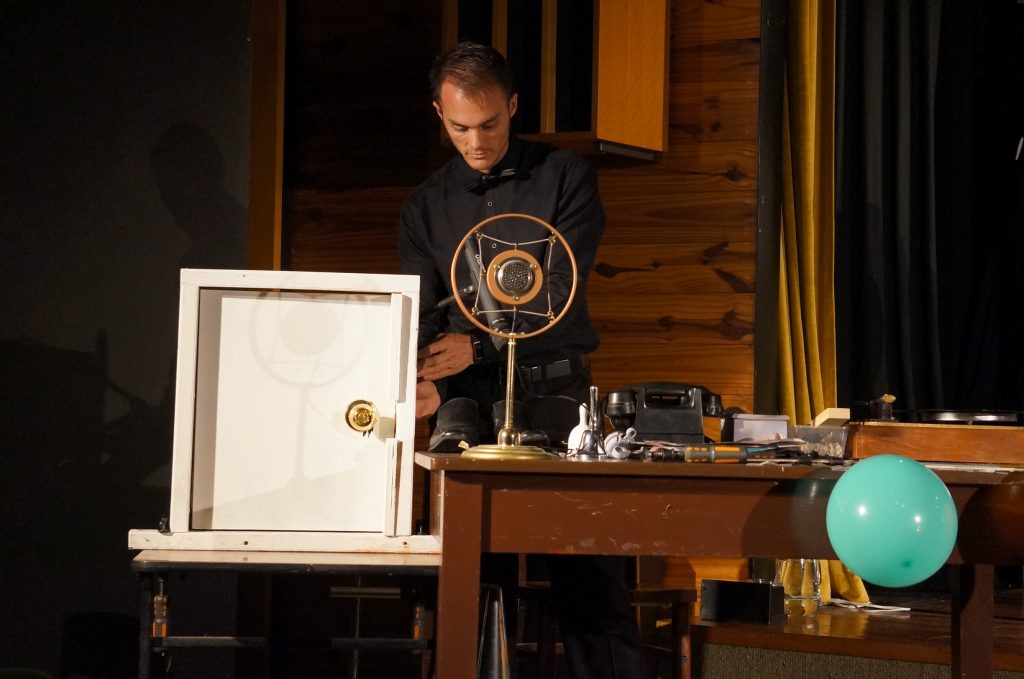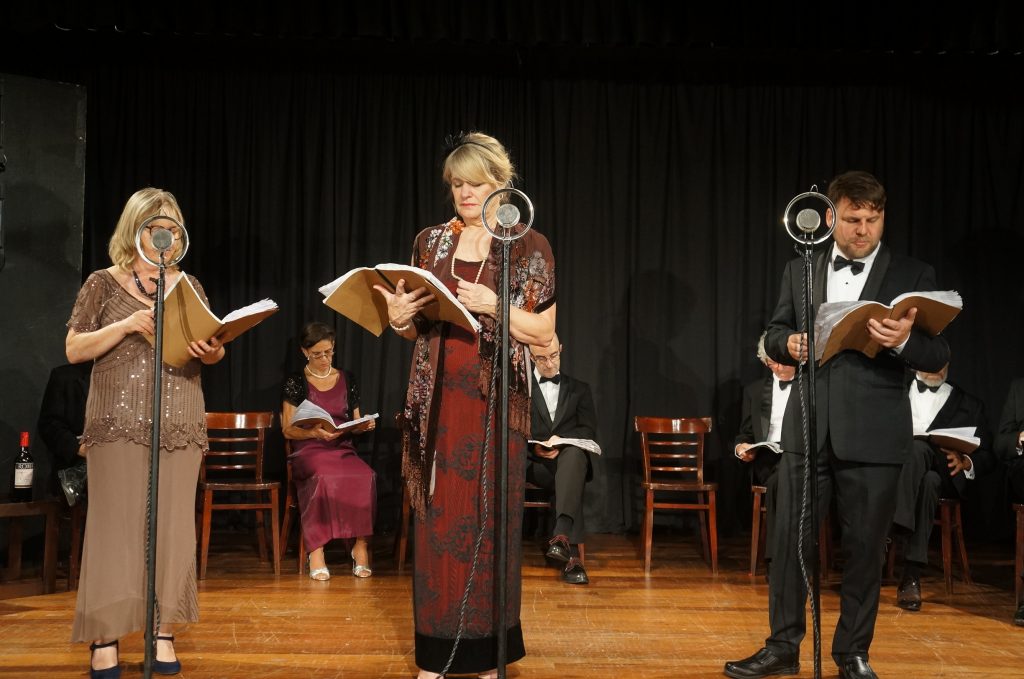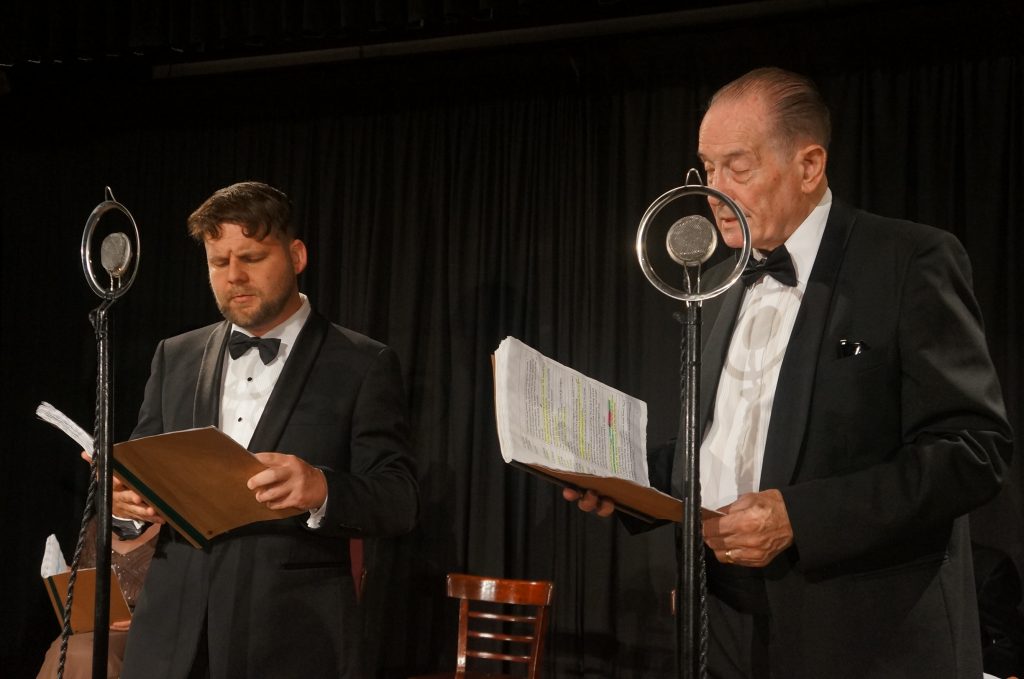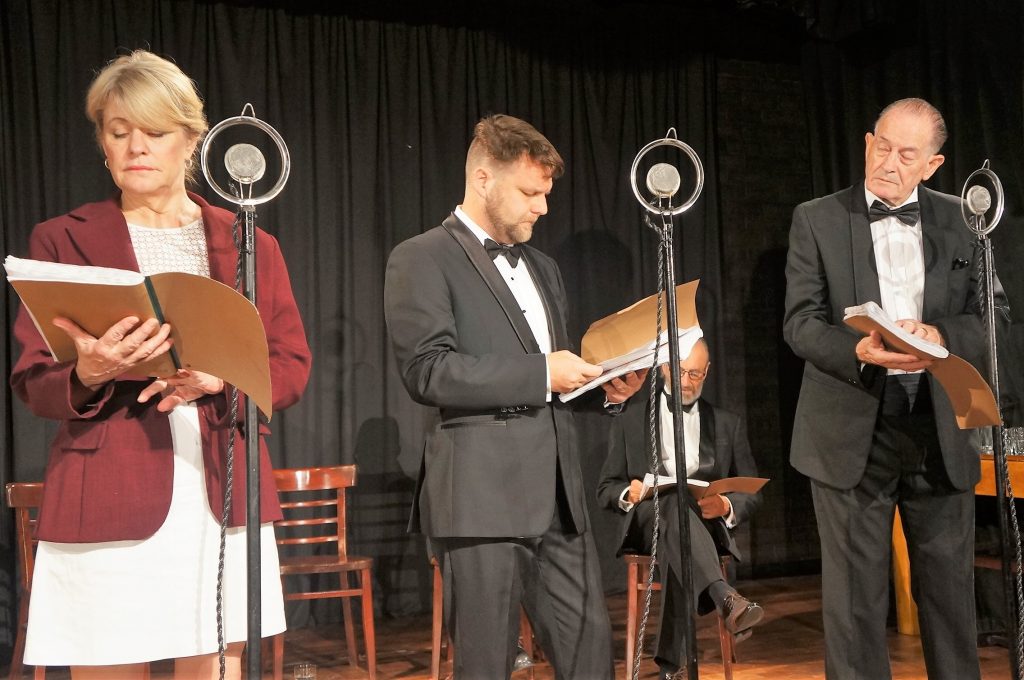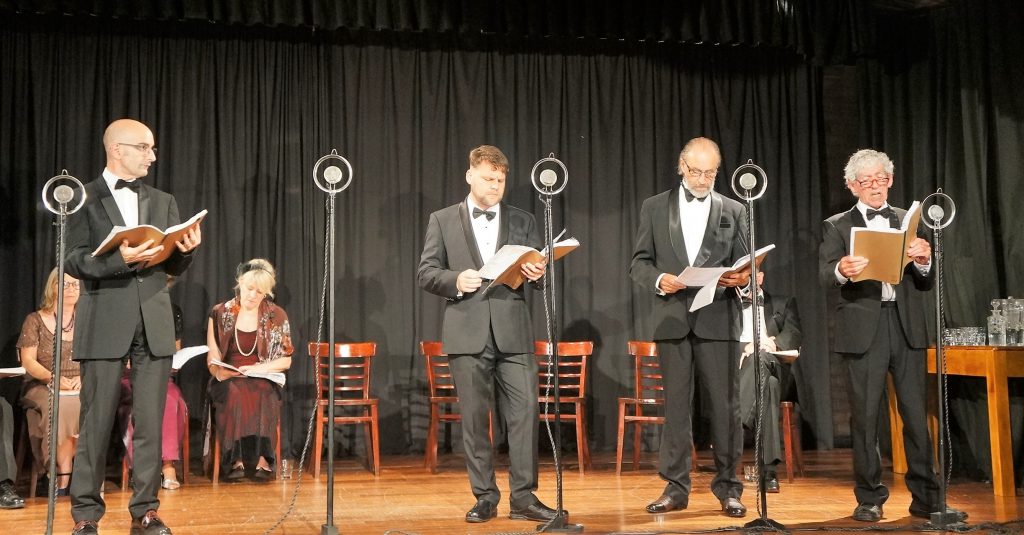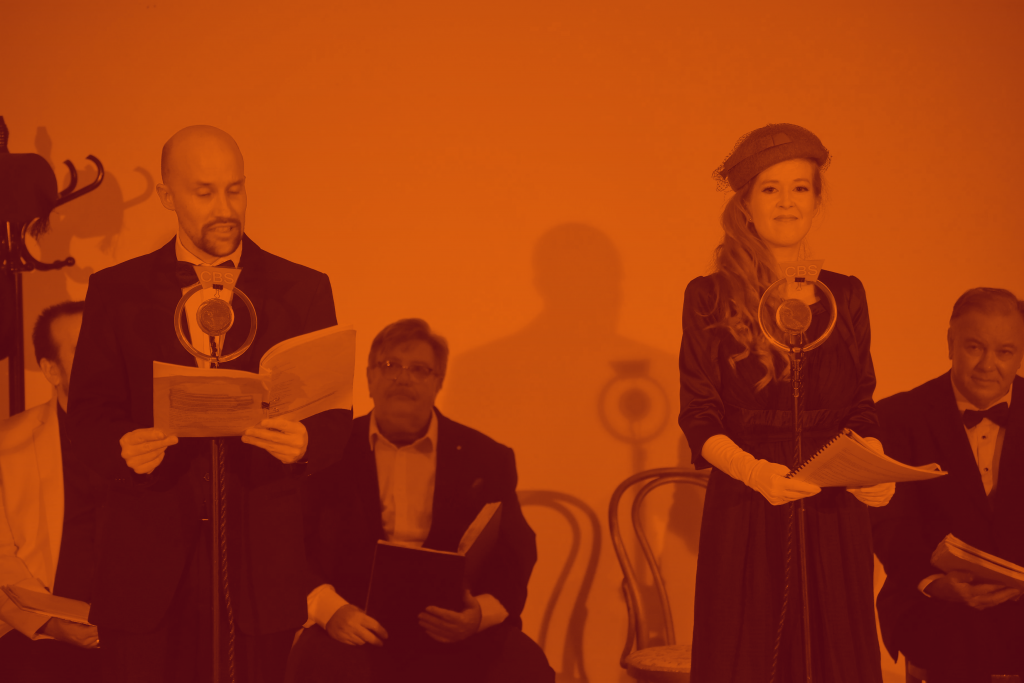
‘A Double Bill of Radio Plays’ // Nash Theatre
‘A Double Bill of Radio Plays’ was timeless.
New Farm Nash Theatre’s ‘A Double Bill of Radio Plays’ welcomed audiences to the prime time of radio plays. Where eloquent and elegant actors who, despite being unseen, dressed to the nines, and where live advertisements were presented by smooth-talking salesmen, who added layers of suspense, drama and action.
“Going live in 10, 9, 8…”, the world of Sherlock Holmes was brought to life in the first radio play, ‘The Adventure of the Irregular Client’. Reminiscent of the classic tales by Sir Arthur Conan Doyle, this play pulled the audience into the thick of the action. The Lady of the Manor, where one of Holmes’ old “Baker Street Irregulars” works, has been suspiciously murdered. The only man for the job, of course, is the stoic, and ever so spirited Sherlock Holmes, accompanied of course by the knowledgeable yet naïve Watson, and the bumbling Inspector Lestrade.
Once this murder was solved, the audience was then moved to the second half of the bill, ‘The ABC Murders’. Agatha Christie was the muse for this one. In a witty script full of wordplay, the audience follows poor Alexander Bonaparte Cust as he stumbles unwittingly into the middle of a string of murders. A serial killer, signing his initials as ABC, is threatening the greater England area, however, it all seems too perfect that dear Cust, whose initials resembled those of the murderer’s, should be responsible.
Director Hazel Mepham has done a simply wonderful job and successfully transported audiences back to the golden age of radio. Ignoring the easy-out of pre-recorded sound, Mepham has opted for a live foley artist to truly bring an authentic feeling to these productions. Despite some shaky accents (moving through regional and central England), a few moments where pace could have been played with, and a few stumbled lines, Mepham has worked with her actors excellently to create accurate and believable characters.
Simple staging and set gave the audience a behind-the-scenes look at a radio recording studio. Complete with a suave American announcer (played by John Scandurra), his introductions and interjections kept the unique nature of the radio play in the forefront of the mind of an audience. With a deep soulful voice that instantly transported you to the days of radio plays and live jingle ads, Scandurra brought another level of reality to the production, ensuring the audience was successfully ensconced into the golden age.
The Foley artist (played by Tim Oxley) is truly the most unique aspect of this production, and without a doubt, a standout feature of the two plays. Oxley filled his role with fervour, professionalism, and skill. He timed every sound effect perfectly – from the character’s footsteps to the door handle opening; even shocking the audience with the popping of balloons to simulate gunshots.
If one closed their eyes and listened, as was the original intent of a radio play, you would have never guessed the tricks he had to use to concoct some of the sound effects. Seeing this all happen live was intriguing. However, exploring a few moments where the audience didn’t see the action would have solidified the unique nature of this feature and an era of entertainment even more.
The standout performer of the evening was Jenny Bonney-Millett. Playing multiple characters, such as Duffey and Mary Barnard, she came to the microphone with something entirely unique for each one. Bonney-Millett’s energy was captivating and the whole production lifted whenever she spoke; seemingly as though some new life had been breathed into it. Her accent and character choices were strong, and she seemed secure in each new role, allowing the tension to rise and fall beautifully.
Another great performance came from Simon Browne, particularly in his role as Inspector Lestrade. Browne brought such an endearing and believably naïve nature to the Inspector that one couldn’t help but hope he would show Sherlock up just once. His control over his voice, arguably the most important aspect of acting for a radio play, was sublime, moving through emotions with ease (if possibly a little too quickly at times). His rapport with fellow actor John Balchin, who played his second in command in both productions, was that of a long-serving cop duo, and the two actors brought a lovely realness to the relationship.
Steven Cameron was yet another performer that brought energy and life into his characters, despite an occasional slip from his toffy British accent. The most consistent across the two plays, Cameron’s portrayal of Watson was perfect and reminiscent of how one would imagine him from the books, as opposed to the more modern renditions of the character. He balanced the stoic, know-it-all nature of Holmes, played skillfully by Brian White, and the bumbling energy of Lestrade (Browne) to piece together a strong rapport between the three.
Other notable mentions were; Stuart Kirk as Gudgeon, whose masterful use of subtle intonation intimated his true motives from the get-go; and Lindi Milbourne as the much put upon Mrs Hudson, whose voice carried the perfect mixture of professional consideration and personal annoyance for her character.
The second play, ‘The ABC Murders’, brought Marion Jones as Miss Marbury and John Tiplady as Alexander Bonaparte Cust, to the stage, or rather to the microphones. The two played the somewhat clueless and awkward, yet sweet-natured characters beautifully. Perhaps a little more development of their relationship earlier on in the play would have moved the action along more smoothly, and made the progression of the relationship a touch more believable.
‘A Double Bill of Radio Plays’ was a nostalgic trip into the bygone era. Radio plays are a timeless presentation, often overlooked by theatres. It’s nice to see Nash Theatre reliving these stories in New Farm.
‘A Double Bill of Radio Plays’ performs at New Farm Nash Theatre until the Saturday, 16 March 2019. For tickets visit https://nashtheatre.com/.




